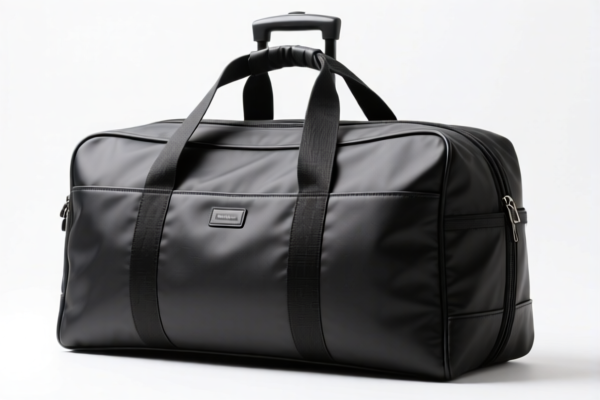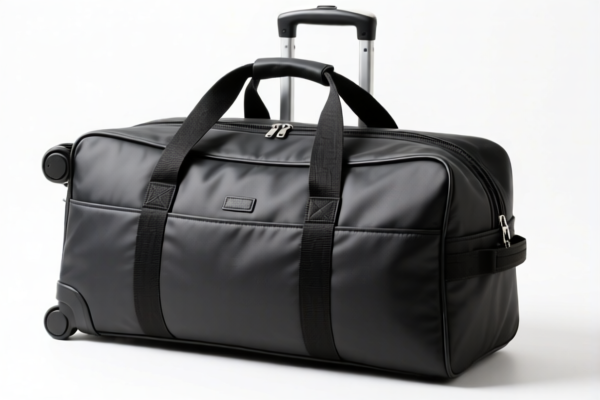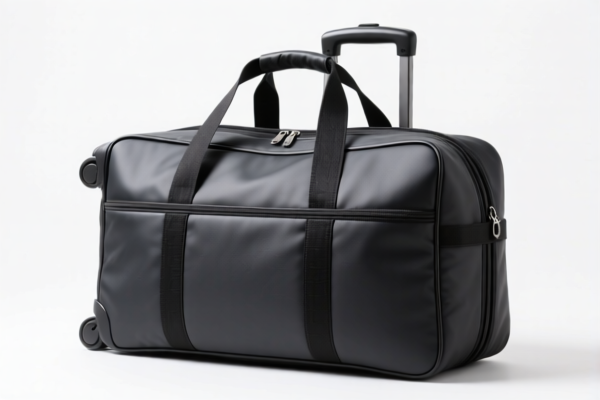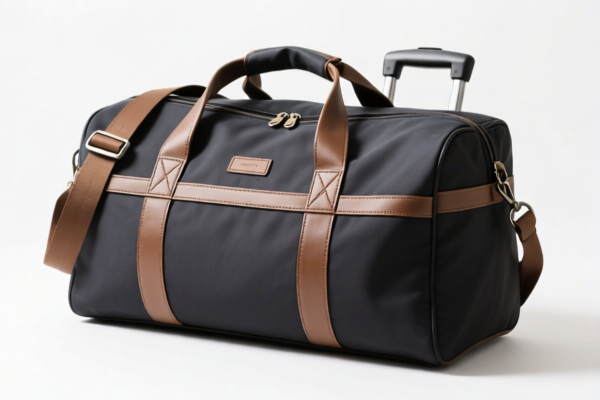| HS Code | Official Doc | Tariff Rate | Origin | Destination | Effective Date |
|---|---|---|---|---|---|
| 4202919030 | Doc | 59.5% | CN | US | 2025-05-12 |
| 4202110030 | Doc | 63.0% | CN | US | 2025-05-12 |
| 4203406000 | Doc | 55.0% | CN | US | 2025-05-12 |
| 4202923120 | Doc | 72.6% | CN | US | 2025-05-12 |
| 4202922000 | Doc | 60.7% | CN | US | 2025-05-12 |




Luggage Bag
A luggage bag, also known as a suitcase, travel bag, or simply baggage, is a container used for holding personal belongings during travel. These bags are designed to transport clothing, toiletries, and other essential items when moving between locations.
Materials
Luggage bags are constructed from a variety of materials, each offering different advantages in terms of durability, weight, and cost:
- Hard Shell: Typically made from polycarbonate, ABS plastic, or aluminum. Offers superior protection for fragile items and resistance to impact. Can be heavier and less flexible in terms of packing capacity.
- Soft Shell: Usually constructed from nylon, polyester, or canvas. Lighter than hard shell options and often features exterior pockets for easy access. May be less protective of delicate contents.
- Leather: A more traditional material, offering a classic aesthetic and durability. Generally heavier and more expensive than synthetic alternatives.
- Hybrid: Combining hard and soft shell elements for a balance of protection and flexibility.
Purpose
The primary purpose of a luggage bag is to facilitate the organized and secure transportation of personal items. They are essential for various types of travel, including:
- Air Travel: Designed to meet airline size and weight restrictions for checked baggage and carry-on luggage.
- Road Trips: Suitable for transporting belongings in the trunk of a vehicle.
- Train Travel: Convenient for carrying items on trains.
- General Travel: Useful for any mode of transportation where belongings need to be carried.
Function
Luggage bags commonly incorporate the following features:
- Handles: Allow for easy lifting and carrying. Telescoping handles are common for wheeled luggage.
- Wheels: Facilitate movement, particularly for heavier bags. Spinner wheels (360-degree rotation) and in-line skate wheels are common types.
- Zippers & Closures: Secure contents and prevent items from spilling.
- Interior Compartments & Pockets: Help organize belongings and separate items.
- Straps & Dividers: Prevent shifting and keep clothing wrinkle-free.
- TSA-Approved Locks: Allow security personnel to inspect contents without damaging the bag.
- Expandable Features: Increase packing capacity when needed.
Usage Scenarios
- Short Trips (1-3 days): Smaller duffel bags or carry-on suitcases are suitable.
- Extended Vacations (4-7 days): Medium-sized suitcases or larger duffel bags are appropriate.
- Long-Term Travel (7+ days): Large suitcases or multiple bags may be necessary.
- Business Travel: Rolling suitcases with dedicated compartments for suits and laptops are common.
- Adventure Travel: Durable, water-resistant duffel bags or backpacks are often preferred.
Common Types
- Carry-on Luggage: Designed to fit in the overhead compartments of airplanes. Size restrictions vary by airline.
- Checked Luggage: Larger bags intended for the cargo hold of airplanes. Subject to weight and size limits.
- Duffel Bags: Cylindrical bags with a top opening, often made of soft materials. Versatile and lightweight.
- Rolling Suitcases: Feature wheels and a telescoping handle for easy maneuverability.
- Backpacks: Offer hands-free carrying and are suitable for adventure travel or backpacking.
- Garment Bags: Designed to protect suits, dresses, and other formal wear.
- Spinner Luggage: Feature 360-degree rotating wheels for effortless movement.
- Hardside Luggage: Constructed from rigid materials like polycarbonate or ABS plastic.
- Softside Luggage: Made from flexible materials like nylon or polyester.
- Travel Totes: Lightweight and versatile bags suitable for short trips or as carry-ons.
- Under-seat Luggage: Designed to fit under the seat in front of you on airplanes.
Luggage bags fall under the category of containers designed for carrying personal belongings during travel. Based on the provided information, several HS codes may be relevant, depending on the material and specific type of bag.
Here are the relevant HS codes:
-
4202190000: This HS code covers “Trunks, suitcases, vanity cases, attache cases, briefcases, school satchels and similar containers: Other”. This is a broad category encompassing various types of luggage, including those not specifically mentioned.
- 42: Chapter 42 refers to articles of leather or of composition leather, animal gut or animal skin; leather articles not elsewhere specified or included.
- 02: Heading 02 specifically covers trunks, suitcases, vanity cases, etc.
- 19: Subheading 19 covers “other” types within this category.
- Tax Details: Basic tariff: 20.0%, Additional tariff: 25.0%, Additional tariff after 2025.4.2: 30.0%, Total tariff: 75.0%.
-
4202919030: This HS code covers “Other: With outer surface of leather or of composition leather: Other Travel, sports and similar bags”. This is more specific, applying to luggage bags with a leather or composition leather exterior.
- 42: Chapter 42 refers to articles of leather or of composition leather, animal gut or animal skin; leather articles not elsewhere specified or included.
- 02: Heading 02 specifically covers trunks, suitcases, vanity cases, etc.
- 91: Subheading 91 covers “other” types within this category.
- 9030: Further specifies “Other Travel, sports and similar bags”.
- Tax Details: Basic tariff: 4.5%, Additional tariff: 25.0%, Additional tariff after 2025.4.2: 30.0%, Total tariff: 59.5%.
It is important to determine the primary material of the luggage bag to select the correct HS code. If the bag is made of materials other than leather or composition leather (e.g., plastic, textiles), other HS codes may be applicable, but are not present in the provided reference material.
Customer Reviews
该网站提供了行李箱HS编码的良好概述,但我还是需要做一些额外研究来确认我混合型行李箱的正确编码。不过,它是一个有用的起点。
关于不同类型行李箱及其HS编码的信息非常清晰。我特别喜欢对4203406000编码的分解及其55.0%的关税。
我找到了我塑料行李箱的4202110030 HS编码。63.0%的关税税率明确列出,这帮助我规划了出口成本。
该页面对行李箱使用的材料及其如何影响HS编码的信息非常丰富。不过,我希望能看到更多软壳行李箱的编码示例。
我对不同类型的行李及其对应的HS编码的详细解释印象深刻。对出口商来说非常有用。